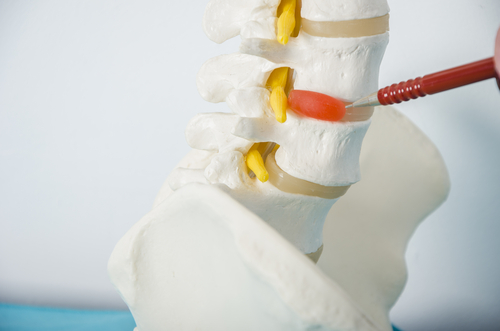
What is Sciatica, and How can a Chiropractic Adjustment Help?
The spine serves as the central neural network within the body. In addition to conveying pain and movement signals, an injured spine can transmit pain to connected body parts. Sciatica is a condition that generally involves pain in the hips, legs, and buttocks, which ultimately originates from the spine. As with other conditions, healing the source of the pain through Chiropractic adjustment is the best strategy. In this blog post, we’ll delve into exactly what sciatica is, and how a Chiropractic adjustment can ease sciatica pain.
What is Sciatica?
Like other spinal conditions, sciatica stems from an injury within the spine. Unlike other spinal conditions, though, back pain is not the identifying factor. Rather, leg pain, numbness/tingling and other forms of discomfort tend to be a more specific and reliable indicator.
Sciatica can range from highly debilitating pain to subdued and occasional discomfort. However, it is rare that sciatica will cause long-term or irreparable damage. Nonetheless, responding to this pain quickly is the best way to eliminate it.
What are the Symptoms of Sciatica?
Unlike TMJ pains, which require a more involved diagnosis, it can be fairly simple for patients to self-diagnose sciatica. Because the sciatic nerve spans such a large distance, there are several symptoms of sciatica. Patients may have one or all of these symptoms.

4 Common Symptoms of Sciatica
- Lower back pain: The lower back is the portion of the body that is most frequently affected by spinal issues. Located below the area of the ribs and above the pelvis, this pain can worsen as a result of poor posture, overuse and other factors. Often, people with lower back pain have difficulty making the transition from sitting to standing, and vice versa. The primary goal of a Chiropractic adjustment is to eliminate this pain.
- Buttock or leg pain: Because the sciatic nerve runs through these regions, it’s common for patients with sciatica to have buttock and leg pain. This pain often intensifies when patients sit down. In terms of sensation, you should expect a numb, tingling or burning feeling. Some patients can also feel a dull, lingering pain. Sciatica generally affects only one side of the body, so most patients will only experience this pain in one buttock.
- Hip pain: More prominent in older people, hip pain is also a common symptom of sciatica. Chiropractic adjustments can mitigate this pain, and restore a pain-free lifestyle.
- Weak/numb leg and foot: Patients with sciatica may also experience weak, numb, or tingly feelings in the legs and feet. “Pins and needles” sensations are also common. Difficulty moving the legs and feet is a strong indicator of sciatica.
How Does Sciatica Develop?
Throughout the years, the disks that separate the spine can become worn. This occurs in standard, everyday movement. This wearing down process can be exacerbated both by excessive, unsafe physical activity, as well as a sedentary lifestyle. Over time, these spinal disks can herniate, meaning that they begin to push out of the hard outer ring. When spinal discs herniate, they can place pressure on surrounding nerves. Receiving a Chiropractic adjustment is the primary recourse for many who develop this pain.

The sciatic nerve starts in the lower back, and runs through the hips, buttocks, legs, and feet. So, it is one of the longest nerves in the body. Sciatica– and the pains that result from it– are caused by overwhelming pressure on the sciatic nerve.
People who work in both lifting-intensive and office jobs are susceptible to sciatica. Pregnant women are also likely to develop sciatica, due to the adjusted center of gravity.
How is Sciatica Treated?
Left untreated, sciatica can grow in severity. So, responding with a prompt and targeted Chiropractic adjustment regimen is crucial.
The goal of a Chiropractic adjustment is to restore the full range of motion of the body, while also eliminating pain. Based on a preliminary assessment, the Chiropractor will likely use several adjustment techniques. Some examples include diversified adjustment, fascial release techniques, and flexion distraction.
While eliminating the source of the pain is the central goal, engaging in safe, light sciatica exercises is also important. Doing so can alleviate tension and pain in the hip, legs and feet. Speak to a Chiropractor to find out about the appropriate exercises and stretches.
Chiropractic Adjustments for Sciatica
At Brenner Chiropractic, our goal is to provide all patients with the dedicated and specific care they need. With a range of Chiropractic adjustment options at his disposal, Dr. Brenner can help patients to alleviate both swelling and pain. Contact us to begin working toward an improved, pain-free lifestyle.
